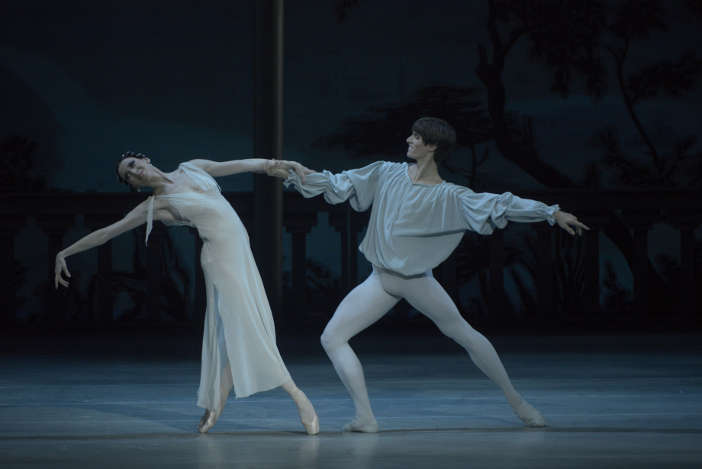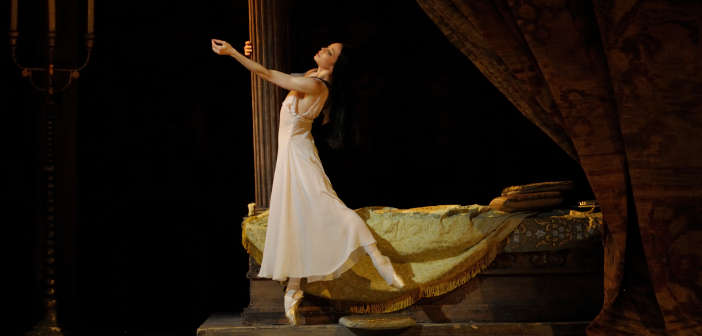The Mariinsky ballet is back for an epic three-week season at the Royal Opera House, kicking off with choreographer Leonid Lavrovsky’s iconic Romeo and Juliet. Formerly known as the Kirov, the Mariinsky Ballet can be traced back to the 18th Century, where the first Russian ballet school was established in St. Petersburg. The idea was to train young dancers to create Russia’s first ballet company. Today its performances are world-renowned.
Romeo and Juliet was first created for the ballet in the 1930s by Sergei Radlov, Artistic Director of the ‘Kirov’, and Adrian Pitrovsky, a theatre critic. Sergei Prokofiev, Radlov’s friend and chess partner, was commissioned to compose the score. When complete, the production came under heavy criticism for its ‘happy ending’. After resigning from the Kirov, Radlov took the idea to the Bolshoi Theatre in Moscow, who turned it down due to Prokofiev’s ‘undanceable’ rhythms. The production was temporarily shelved before being reincarnated in 1940, complete with a traditional tragic ending and choreography from Leonid Lavrovsky. Deemed a huge success, it marked Lavrovsky as a pioneer in the new era of Soviet ballet. He had worked hard with Prokofiev’s ‘undanceable’ score to help synthesise it with the ballet. He cut and simplified it, while utilising different dance techniques and styles to bring it to life. This was much to Prokofiev’s anger, but the score for the performance has since become one of the most popular in the world.

The Mariinsky Ballet has been wowing audiences at the Royal Opera House since 1961. However, it could be argued that a reproduction of a 1940s ballet might not be perfectly fitting, but when the curtain first pulled back on this three-hour sitting in Covent Garden, it looked more like a re-enactment from the Italian renaissance. This might seem apt for a play set in the fourteenth century, but instead, now almost 75 years on, it felt somewhat dated. Pyotr Williams’ costumes were romantic but lacking in dramatic gravitas. The only exception was Tybalt, played by Kamil Yanguarazov, dressed in a garish red wig in an attempt to extend his cavalier personality. The effect was more flambéed than flamboyant. However, as a particularly vile character who enjoys bullying the local baker and butchering the jovial Mercutio, this only makes you despise him all the more.
Despite the oomph-lacking costumes and old-fashioned sets, the exquisite dancing really brings the production to life. Three dancers light up the stage; Kimin Kim, who plays Mercutio, Juliet, played by Alina Somova and Romeo, played by Filipp Stepin. 21-year-old Kim, the first Asian to be signed to the exclusive Russian powerhouse, was a delight to behold. His powerful, athletic yet feather-light leaps across the stage could not help but make you smile, and his death brought with it more emotion than Romeo and Juliet’s morbid finale. Alina Somova was a mesmerizing Juliet as she glided across the stage in a floaty slip of a dress. As a dancer who has been so widely criticised, it was difficult to take your eyes off the delicate and beautiful Juliet she portrayed. Stepin brought the drama to a crescendo as Romeo in the final act, when he sneaks into Juliet’s funeral. Under a cascade of stars in the Venetian churchyard he approaches Juliet, effortlessly hoisting her fragile body up above his head, passionately lamenting her death to the heavens.
Throughout the performance, Conductor of the Mariinsky orchestra, Boris Gruzin, beautifully matches Prokofiev’s compositions with the choreography. The score is particularly effective in Act two, where a long, drummed out heartbeat violently stops upon Mercutio’s death. After the pleasure of watching a Mariinsky Ballet, it’s easy to see how the Russians put their stars on a pedestal. Expect an evening of enchanting leaps, delicate jetés, and intimate pas de deux.
The Mariinsky season runs at The Royal Opera House, Covent Garden, London, until August 16. For more information and tickets visit the website.
Note: Photographs depict different performers from those mentioned in this article.




